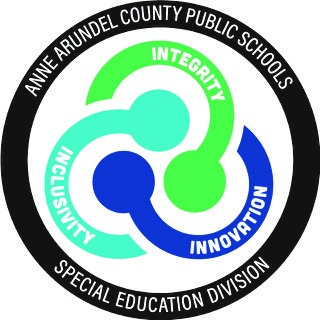Erin Belcher
Coordinator of Special Services
410-424-3267
Corrine Krampf, MS OTR/L
Nationally Board Certified Occupational Therapist
Program Manager for Occupational Therapy and Physical Therapy
410-424-3216

Erin Belcher
Coordinator of Special Services
410-424-3267
Corrine Krampf, MS OTR/L
Nationally Board Certified Occupational Therapist
Program Manager for Occupational Therapy and Physical Therapy
410-424-3216
Physical Therapy services are provided to all eligible school-aged students in Anne Arundel County Public Schools, through the Division of Special Education’s Office of Special Services. These services are provided by licensed physical therapists (PT) and licensed physical therapist assistants (PTA) who have the expertise to work with students having a wide range of disabilities and diverse educational needs.
What is the focus of school-based physical therapy?
Physical therapy, as a related service, is provided “to assist a child with a disability to benefit from special education”. (IDEA § 300.34) The emphasis of school-based physical therapy is to help students access the academic environment and participate in educationally related activities as part of an Individualized Education Plan (IEP). School physical therapy focuses on a child's ability to move as independently as possible in the school environment. Services include activities that address:
Mobility:
Functional mobility skills (independent and/or assisted)
Architectural accessibility
Utilizing appropriate assistive devices
Transfers
Positioning
Educational and Work Activities
Gross motor
Positioning
Pre-vocational tasks
Play and leisure activities
How does a child/student qualify for school-based physical therapy?
A child or student who is eligible for special education, is eligible for physical therapy services. A teacher, parent/guardian or other involved person can request a physical therapy assessment. Some students who are not eligible for special education services may qualify under Section 504 of the Rehabilitation Act of 1973. The 504 plan specifies the accommodations that are necessary for a student to access educational activities and may involve input from a PT.
Who decides the need and scope for services?
*The IEP Team decides the need and scope of PT services that a student requires to benefit from his/her educational program.
*Assessment takes into consideration needs associated with progressing the student in the educational setting.
*A physician’s referral or recommendation from an outside physical therapist are considered, however they do not determine the provision of IEP driven PT services.
Where does therapy occur?
To the extent possible, therapy is integrated into naturally occurring activities and routines within the school day, e.g. classroom, lunchroom, stairs, hallways, playground, bathroom, work sites, or other AACPS approved instructional settings.
How is therapy delivered?
*The most common service delivery methods include direct, integrated and consultative, with the latter two being the least restrictive methods.
*Therapy is delivered in collaboration with school staff. The student’s teacher/s and paraprofessionals (teaching assistant) are trained for effective carryover of skills learned from therapy sessions. However, only a licensed therapist may provide professional therapeutic services.
Who provides School PT services?
School PT services are provided by physical therapists and physical therapist assistants licensed in the state of Maryland. “Licensed physical therapist” means an individual licensed by the Board of Physical Therapy Examiners to practice physical therapy or limited physical therapy in Maryland. “Licensed physical therapist assistant” means an individual licensed by the Board of Physical Therapy Examiners to practice limited physical therapy in Maryland. These individuals have achieved a passing score on the national licensing examinations and have graduated from an approved physical therapy or approved physical therapist assistance curriculum.
When are school-based services discontinued?
• Goals or outcomes requiring therapy have been met and no additional goals are appropriate
• Potential for further change from therapy service appears unlikely
• Problem ceases to be educationally relevant
• Strategies can be implemented by the current educational team
• Therapy is contraindicated due to medical, psychological or social complications
How does school-based PT Differ from Community/Medically Based PT?
A medical diagnosis or motor delay confirmed by evaluation results does not automatically indicate a need for school-based PT services. There must be an adverse impact on the child/student’s performance or access to their education. School-based PT is not intended to replace community medical services, but is provided only when identified problems directly affect educational performance that cannot be adequately addressed by the school staff. Collaboration between school and community therapists is essential to coordinate a child’s therapy and prevent duplication of services which results in denial of payment of community-based therapy. Collaboration may take the form of phone calls, written communication logs, discharge planning, Individualized Education Program (IEP) and other team meetings.
How can I find out more about School PT?
If your child/student attends an Anne Arundel County Public School, contact your child’s classroom teacher, school administrator, or the physical therapist assigned to the school
If your child is birth to 3 years of age, contact Anne Arundel County’s Infant and Toddler Program at 410-424-3260.
If your child is three (3) years of age to 21 years, and does not attend an Anne Arundel County Public School, contact the Special Education Department
Helpful Link: